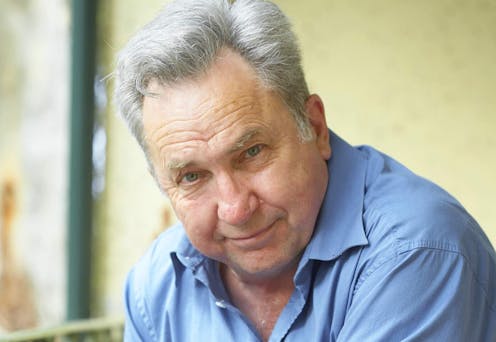John Tranter's influential life in literature
- Written by Aidan Coleman, Senior Lecturer, English and Creative Writing, Southern Cross University

Perhaps more than any Australian poet of the 20th Century, John Tranter, who died last Friday at the age of 79, was guided by a relentless desire to experiment. His earliest admiration was for the French poet Arthur Rimbaud, and he soon discovered John Ashbery, who ultimately became his most important influence.
Tranter was dissatisfied with the Australian poetry scene he encountered in the mid-1960s. He rejected what he saw as a political and aesthetic conservatism, with its roots in an Anglo-Irish tradition and little sympathy for the French innovators of the 19th century or more recent developments in the United States.
The hoax poet Ern Malley was the only Australian influence Tranter credited.
Early work
The poems in Tranter’s first collection Parallax (1970) were short and often tentative in their disjunctions. His experiments were propelled further in Red Movie and Other Poems (1972), The Blast Area (1974), and The Alphabet Murders (1976).
These early collections show Tranter discarding conventional subject matter and a stable speaking voice for a purer realm of textual play:
when the new alphabet soup of the earthis raised into a flag, the inevitable wind appearswith its own “sister to breath”.
[…]
thoughts of silver oppress the lake :such lightopening a way through.
In these poems, disjunctions are heightened and shifts in pronouns are intensified, as metaphors are bent and deranged. Tranter returns to the subjects of movies, drugs, fast cars and weaponry, but the nouns are employed for their textural grit and the atmosphere they generate more than for what they signify.
The work baffled those readers and critics attuned to more conventional models. It was claimed by some that the poems lacked emotional depth. But many reviewers, Martin Johnston among them, recognised something that was vital and new.
Crying in Early Infancy: 100 Sonnets (1977) was written concurrently with these collections. The sonnet form brought a greater sense of coherence, as it foregrounded the wit and an urbanity that was sometimes muted in Tranter’s earlier work.
Unlike the majority of his contemporaries, Tranter quickly gained acceptance. Two of his early books were published by Angus & Robertson, a mainstream publisher that had a validating role in Australia akin to Faber & Faber in the United Kingdom. This venerable publisher produced his Selected Poems (1982), before the poet had turned 40.





